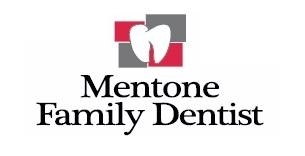
Lately, you might have seen posts or videos claiming that dentists are secretly injecting graphene oxide (GO) when they numb your tooth.
We want to set the record straight: current evidence shows that the local anaesthetic used in dentistry is safe, regulated, and does not contain graphene oxide.
At Mentone Family Dentist, many patients who value holistic care have raised questions about this. We’ve reviewed the science and checked what respected biological dental associations say, so you can feel informed and confident in your choices.
What Exactly is Graphene Oxide?
Graphene oxide is a man-made material from carbon. Researchers study it in labs because it’s strong, thin, and can carry other molecules (like drugs) in controlled ways. It’s exciting in scientific research—but it’s not something used in your everyday numbing injections at the dentist.
Why Did Concerns Start?
The concern began with claims on blogs and social media that GO had been “found” in dental anaesthetic vials. However, these claims weren’t backed by published studies, peer-reviewed journals, or independently verified lab results. In other words: no solid science supports these claims.
What Do Biological Dental Experts Say?
IAOMT (International Academy of Oral Medicine & Toxicology)
-
They’ve received questions about GO in common anaesthetics like lidocaine, articaine, and mepivacaine.
-
Some private testers claimed to detect GO, but when other labs repeated the tests, the results couldn’t be confirmed.
-
Even if GO were ever detected, there’s no evidence it causes harm at dental doses.
-
Most dental work doesn’t need a 2–3 day long-acting anesthetic. If longer numbing is needed, we use bupivacaine, which doesn’t contain GO.
IABDM (International Academy of Biological Dentistry & Medicine)
-
They hired a nanotoxicologist to test the local anesthetics used by biological dentists.
-
No trace of graphene oxide was found in any sample tested.
What We Believe at Mentone Family Dentist
Regulatory bodies like the TGA in Australia and the FDA in the U.S. require every ingredient in a medicine to be listed. Graphene oxide does not appear on any of these lists. Furthermore, no signed-off, peer-reviewed evidence shows graphene oxide is in everyday dental numbing shots.
The bottom line: we see no evidence that GO is present in numbing injections.
Our philosophy is built on honesty, transparency, and shared decision-making—so if you have concerns, we’re here to talk through your options.
Your Options With Us
Your comfort and peace of mind is important to us and we’re all about informed, shared decision making. If you’re still concerned, there are several options:
Standard local anaesthetic – safe, routine, and the best way to prevent pain during treatment.
Limited or no numbing – this is possible for very minor treatments using lasers, though some discomfort may remain.
Declining numbing for bigger treatments – this is not advised. Before anaesthetics, dental care was often painful and traumatic, which goes against our holistic focus on preventing harm and reducing stress.
The Short Answer - Do dental local anaesthetics contain graphene oxide?
-
No reliable science shows graphene oxide in dental numbing injections.
-
IAOMT: conflicting findings with no clear proof of graphene oxide.
-
IABDM: no graphene oxide detected in any tests.
-
Mentone Family Dentist: we trust verified ingredient lists from the TGA & FDA that do not declare GO as an ingredient.
Have more questions about dental safety, local anaesthetics, or holistic alternatives? Book a free consultation with our team today.
